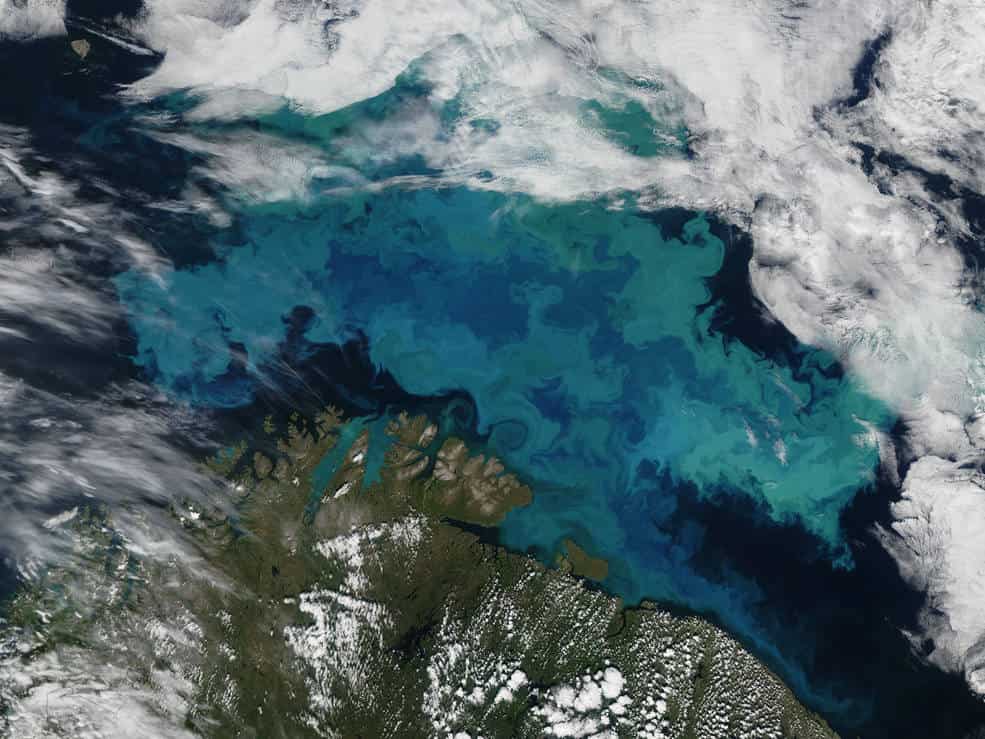Scientists have found yet another way climate change is altering the planet. The color of the ocean has changed over the last 20 years, a trend that can’t be explained by year-to-year variability alone. This shift, subtle to the human eye, has occurred in over 56% of the world’s oceans – an area larger than the total land surface on Earth.

An alteration in the color of the ocean means that marine ecosystems may undergo transformations as well. Although the precise nature of these changes remains unclear to the international team of researchers, they strongly believe that the shift is likely attributed to human-induced climate change.
“I’ve been running simulations that have been telling me for years that these changes in ocean color are going to happen,” study co-author Stephanie Dutkiewicz said in a media statement.
“To actually see it happening for real is not surprising, but frightening. And these changes are consistent with man-induced changes to our climate.”
Going beyond chlorophyll
The color of the ocean is determined by its upper layers, reflecting the substances present within. Deep blue waters indicate a scarcity of life, while greener waters suggest the presence of photosynthetic organisms, particularly phytoplankton. These are plant-like organisms abundant in the upper ocean, characterized by their green pigment chlorophyll.
Phytoplankton supports a wide range of organisms, including krill, fish, seabirds, and marine mammals. It also plays a significant role in the ocean’s capacity to absorb and store carbon dioxide. Given its importance, scientists are actively monitoring phytoplankton populations across the ocean’s surface and how they could react to climate change.
To do so, scientists have tracked chlorophyll changes. This involves assessing the ratio of blue to green light reflected from the ocean surface, which can be effectively monitored using satellite-based observations. But in 2010, a study warned that if scientists only look at chlorophyll, it would take at least 30 years to spot any trend driven by climate change.
Changes in the ocean
In their new study, the researchers went through measurements of ocean color taken by the Moderate Resolution Imaging Spectroradiometer (MODIS) – an instrument on the Aqua satellite, which has been observing ocean color for over 20 years. MODIS takes measurements in seven wavelengths, including the two colors used to estimate chlorophyll.
The satellite captures color differences in the ocean that are imperceptible to the human eye. While we typically perceive much of the ocean as blue, the true color comprises a range of subtler wavelengths, including blue, green, and even red. In their study, the researchers did a statistical analysis using data from satellite measurements since 2002.
Their initial focus was on examining the extent of color variations among different regions within a single year, providing insights into their natural fluctuations. They then expanded their method over a longer period. Through this analysis, a clear trend emerged that couldn’t be explained by the typical year-to-year variability.
The researchers then used a climate model to see if there was a connection between the observed trend and climate change. They simulated the oceans under two scenarios: one adding greenhouse gases and the other without them. The first one predicted changes to ocean color in about 50% of the world’s oceans – in line with what the team found.
“The color of the oceans has changed,” Dutkiewicz said in a statement. “And we can’t say how. But we can say that changes in color reflect changes in plankton communities, that will impact everything that feeds on plankton. It will also change how much the ocean will take up carbon, because different types of plankton have different abilities to do that.”
The study was published in the journal Nature.









